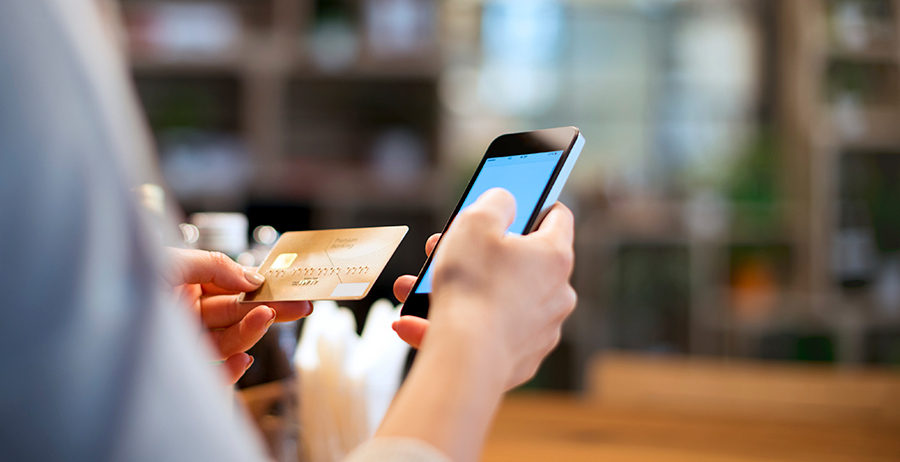
Marcus stood in line at the grocery store, a basket full of healthy food items in hand. He had been working hard to maintain a balanced diet as part of his wellness journey.
As he approached the counter, he reached for the folded bills in his pocket, relieved he had enough cash to cover the cost. However, his relief quickly turned to panic when he saw a sign that read: “We are temporarily unable to accept cash payments. Card transactions only.”
Marcus felt a wave of embarrassment wash over him. He had relied solely on using cash since his release, wary of the complexities of banking after his time away. After taking two buses just to get to the market, he now understood that having a bank account is not just convenience: it’s a necessity.
Types of Bank Accounts
Marcus learned about the two main types of bank accounts:
- Checking account: Designed for everyday transactions, these accounts typically come with a debit card and checkbook for making purchases and paying bills.
- Savings account: Ideal for setting aside funds for emergencies or future goals, these accounts usually offer higher interest rates than checking accounts.
Open a Bank Account
To open an account, you will need to gather the necessary documents:
- Two forms of identification (e.g., government-issued photo ID and social security card)
- Proof of address (e.g., a utility bill with your name)
- Initial deposit (amount varies by bank)
Marcus decided to start with a basic checking account, which would enable him to receive direct deposits from his job and easily manage his day-to-day expenses.
Manage an Account
To effectively manage his new account, Marcus:
- Set up online and mobile banking to monitor his balance and transactions
- Enabled account alerts to notify him of low balances or unusual activity
- Learned how to use online bill pay for recurring expenses
- Familiarized himself with any fees associated with his account and how to avoid them
It may take a little time to learn how to do these tasks to manage your account, but if you are willing to learn, most banks have staff willing to help you.
Establish a Savings Habit
In addition to his checking account, Marcus opened a savings account to start building an emergency fund. He set a goal to save at least one month’s worth of living expenses as a starting point.
Reestablish Credit
Marcus understood that rebuilding his credit would be crucial for his financial future. He explored several options and decided to start with the following:
- Secured credit card: Marcus applied for a Capital One Platinum Secured Credit Card with a $200 security deposit. He used it for small purchases like groceries and gas, paying the balance in full each month. After six months of responsible use, Capital One increased his credit limit without requiring additional deposits.
- Credit-builder loan: Marcus took out a $1,000 credit-builder loan from his local credit union with a 12-month term. The credit union held the funds in a savings account while Marcus made monthly payments of $89. At the end of the term, he received the $1,000 minus interest, and the positive payment history was reported to credit bureaus.
- Becoming an authorized user: Marcus’s sister added him as an authorized user on her Chase Freedom Unlimited card, which had a long history of on-time payments and low credit utilization. This enabled Marcus to benefit from her positive credit history without using the card himself.
- Timely bill payments: Marcus set up automatic payments for his utilities, cell phone, and rent. He also made sure to pay his secured credit card balance in full each month before the due date. After several months of consistent on-time payments, he saw a gradual improvement in his credit score.
Today, Marcus uses free credit score services provided by his bank and credit card issuer, enabling him to track his improvement and identify areas for improvement.
These actions may also help you establish a positive credit history and improve your credit score over time.
Budgeting for Success
To stay on track financially, Marcus created a simple budget using the following steps:
- List all sources of income
- Identify fixed expenses (e.g., rent, utilities)
- Estimate variable expenses (e.g., groceries, transportation)
- Set aside money for savings and debt repayment
- Track his spending using a mobile app
Financial Education Resources
Marcus also takes advantage of free financial education resources offered by his bank and local community organizations. These workshops and online courses help him better understand topics like budgeting, saving, and improving his credit score.
- FDIC’s Money Smart Program: Free financial education resources
- Consumer Financial Protection Bureau: Information on banking and credit
- National Foundation for Credit Counseling: Free or low-cost credit counseling services
- Credit Karma: Free credit score monitoring and financial education tools
The Importance of Financial Stability in Reentry
As Marcus reflected on his progress, he realized how important financial stability is for his successful reintegration. Having a bank account, rebuilding his credit, and managing his money responsibly gives him a sense of control and hope for the future.
He smiled as he thought about how far he’s come since that day at the grocery store, now confident in his ability to make it on his own.
Sign up for email alerts below to receive the next article as Marcus continues his journey towards independence. You can also download our free Get Started Workbook for more information on finances and other reentry resources.